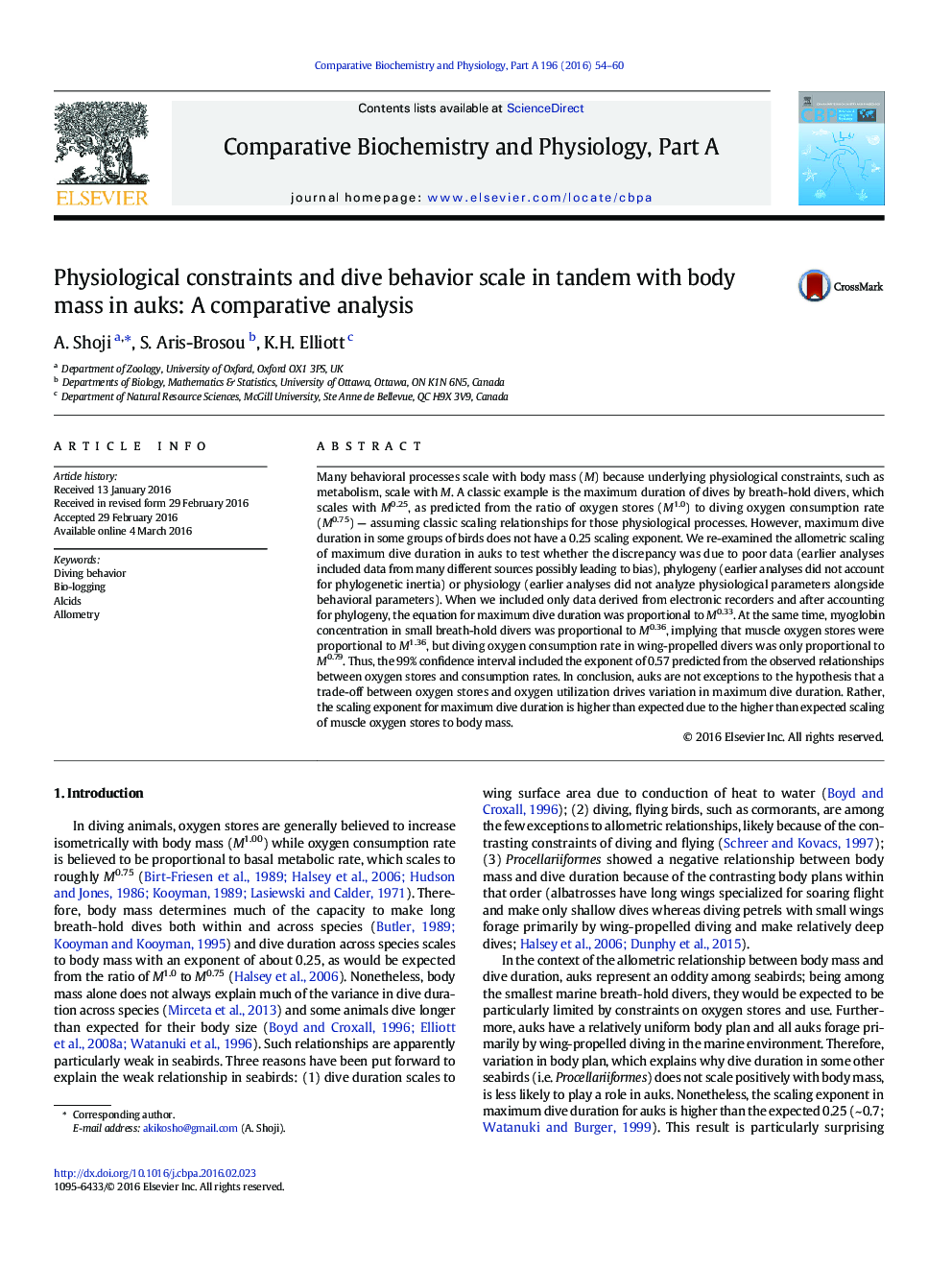| کد مقاله | کد نشریه | سال انتشار | مقاله انگلیسی | نسخه تمام متن |
|---|---|---|---|---|
| 1971858 | 1538991 | 2016 | 7 صفحه PDF | دانلود رایگان |
Many behavioral processes scale with body mass (M) because underlying physiological constraints, such as metabolism, scale with M. A classic example is the maximum duration of dives by breath-hold divers, which scales with M0.25, as predicted from the ratio of oxygen stores (M1.0) to diving oxygen consumption rate (M0.75) — assuming classic scaling relationships for those physiological processes. However, maximum dive duration in some groups of birds does not have a 0.25 scaling exponent. We re-examined the allometric scaling of maximum dive duration in auks to test whether the discrepancy was due to poor data (earlier analyses included data from many different sources possibly leading to bias), phylogeny (earlier analyses did not account for phylogenetic inertia) or physiology (earlier analyses did not analyze physiological parameters alongside behavioral parameters). When we included only data derived from electronic recorders and after accounting for phylogeny, the equation for maximum dive duration was proportional to M0.33. At the same time, myoglobin concentration in small breath-hold divers was proportional to M0.36, implying that muscle oxygen stores were proportional to M1.36, but diving oxygen consumption rate in wing-propelled divers was only proportional to M0.79. Thus, the 99% confidence interval included the exponent of 0.57 predicted from the observed relationships between oxygen stores and consumption rates. In conclusion, auks are not exceptions to the hypothesis that a trade-off between oxygen stores and oxygen utilization drives variation in maximum dive duration. Rather, the scaling exponent for maximum dive duration is higher than expected due to the higher than expected scaling of muscle oxygen stores to body mass.
Journal: Comparative Biochemistry and Physiology Part A: Molecular & Integrative Physiology - Volume 196, June 2016, Pages 54–60
